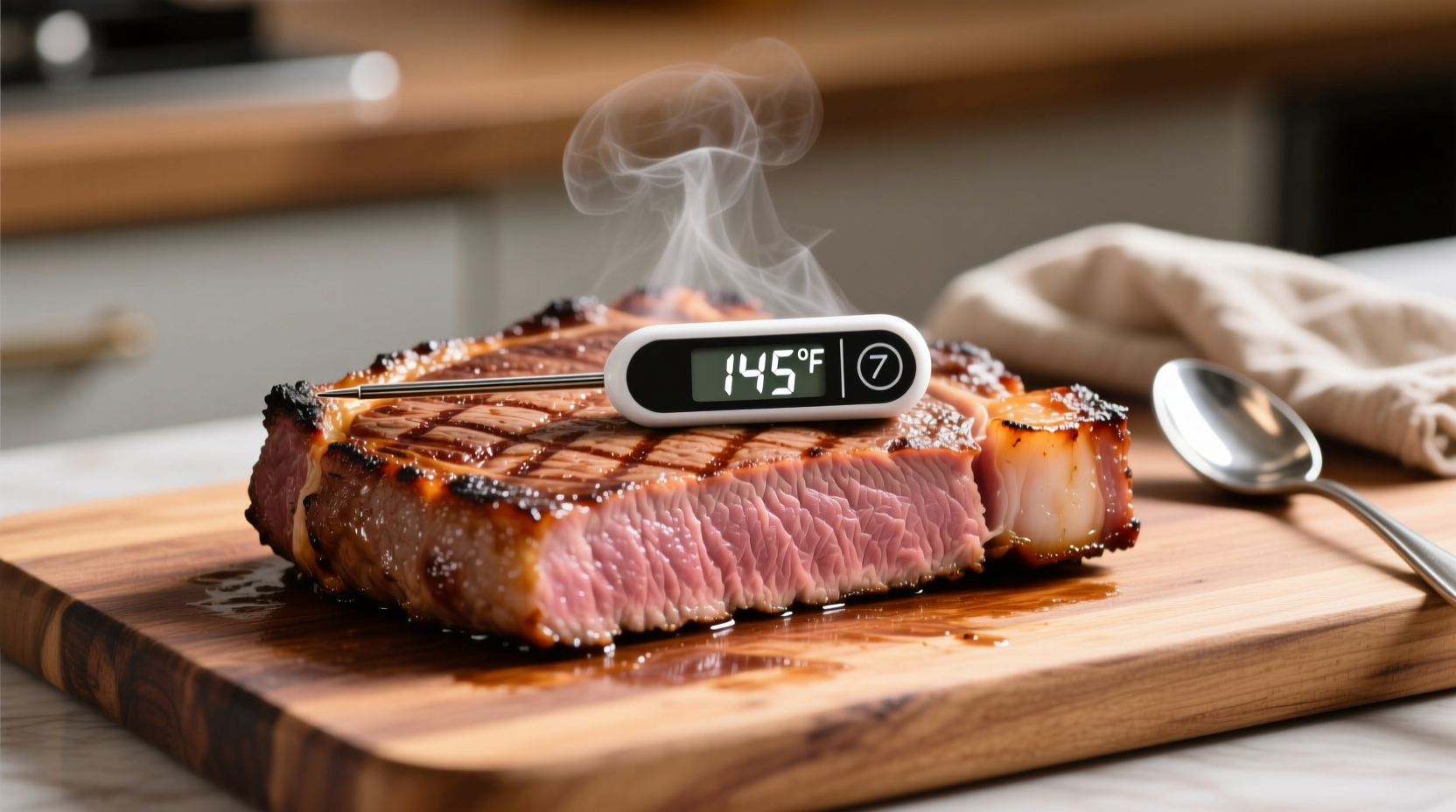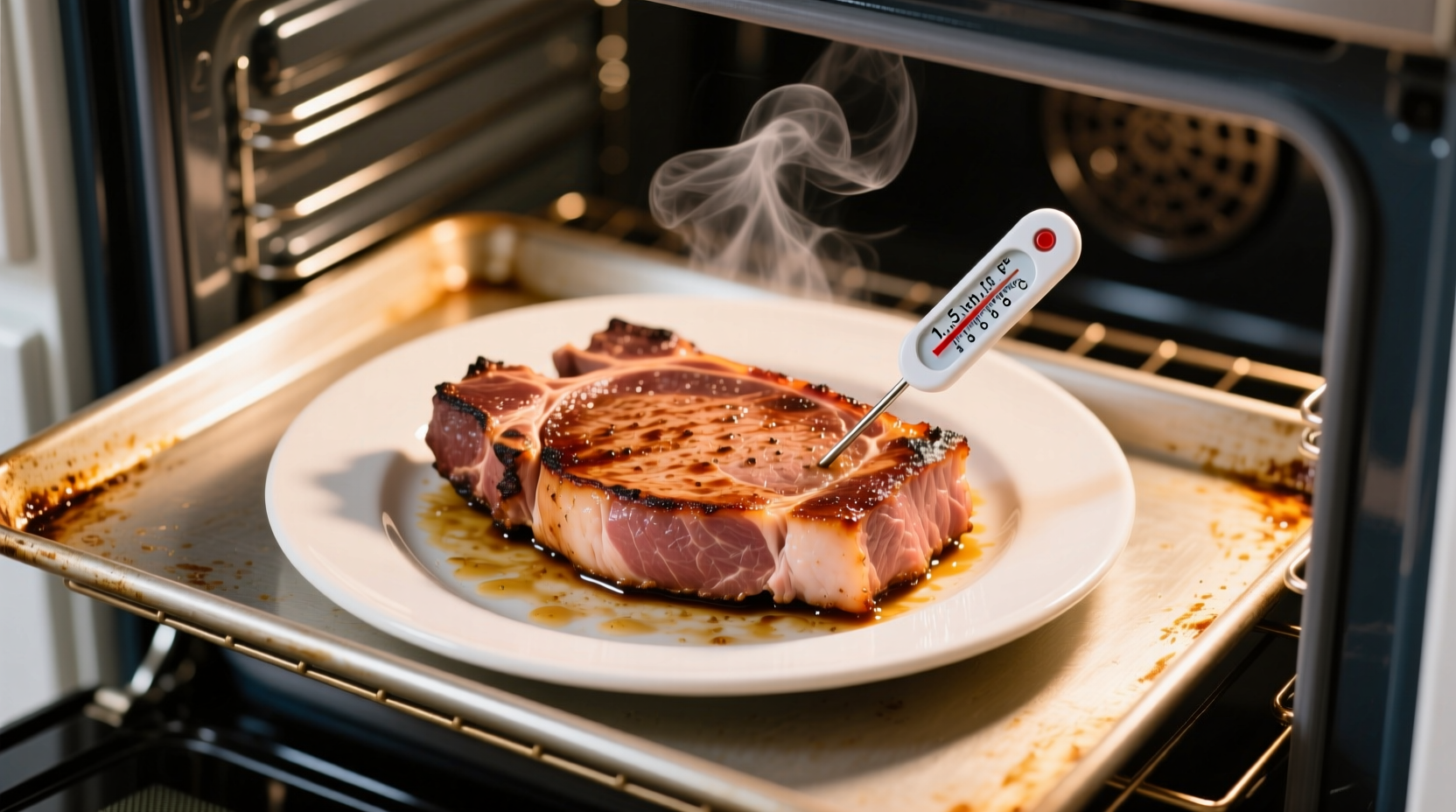For standard 1-inch thick pork steaks, bake at 375°F (190°C) for 18-22 minutes until internal temperature reaches 145°F (63°C), followed by a 3-minute rest. Thinner cuts (½ inch) require 12-15 minutes, while thicker cuts (1½ inches) need 25-28 minutes.
Getting oven-cooked pork steak perfectly tender and juicy without overcooking is simpler than you think. This guide delivers precise timing based on thickness, backed by USDA food safety standards and professional chef techniques. Skip the guesswork and achieve restaurant-quality results every time with our step-by-step approach.
Why Oven Cooking Works Best for Pork Steaks
Oven baking provides consistent, even heat that prevents the common pitfalls of stovetop cooking—burnt exteriors with raw centers. Unlike grilling, which requires constant attention, oven cooking lets you set it and forget it while maintaining precise temperature control. The dry heat environment creates a beautiful crust while gently cooking the interior to that perfect pink hue professional chefs aim for.
Preparation: Setting Up for Success
Before you even preheat your oven, proper preparation determines your outcome:
- Temperature equilibrium: Remove pork from refrigerator 30 minutes before cooking. Cold meat cooks unevenly.
- Dry surface is critical: Pat steaks thoroughly with paper towels—moisture prevents proper browning.
- Seasoning strategy: Apply oil first (helps spices adhere), then your seasoning blend. Avoid sugar-based rubs that burn in oven.
- Rack positioning: Place oven rack in the center position for even heat circulation.
Exact Cooking Times by Thickness
These times assume preheated oven at 375°F (190°C) and room-temperature meat. Always verify with a meat thermometer as oven temperatures vary.
| Pork Steak Thickness | Oven Temperature | Approximate Cooking Time | Internal Temperature Target |
|---|---|---|---|
| ½ inch (1.3 cm) | 375°F (190°C) | 12-15 minutes | 140°F (60°C) |
| 1 inch (2.5 cm) | 375°F (190°C) | 18-22 minutes | 145°F (63°C) |
| 1½ inches (3.8 cm) | 375°F (190°C) | 25-28 minutes | 145°F (63°C) |
| 2 inches (5 cm) | 350°F (177°C) | 30-35 minutes | 145°F (63°C) |
Source: USDA Food Safety and Inspection Service guidelines updated 2023 confirm 145°F with 3-minute rest achieves both safety and optimal texture (fsis.usda.gov).
The Evolution of Pork Cooking Temperatures
Understanding why today's recommendations differ from your grandmother's cookbook builds confidence in modern methods:
- Pre-2011: USDA recommended cooking pork to 160°F (71°C), resulting in dry, overcooked meat
- 2011: USDA revised standard to 145°F (63°C) with 3-minute rest based on improved food safety research
- Present: Current guidelines balance safety with texture—pork can be slightly pink and still safe
This change reflects advances in pork production safety and better understanding of pathogen destruction temperatures. Modern pork is raised in controlled environments with strict veterinary oversight, unlike historical farming practices.
Avoid These Common Oven Cooking Mistakes
Even with perfect timing, these errors ruin otherwise good pork steaks:
- Peeking too often: Opening the oven door drops temperature significantly—check only during final 5 minutes
- Slicing immediately: Cutting too soon releases juices—always rest 3-5 minutes for optimal moisture retention
- Ignoring carryover cooking: Temperature rises 5-10°F after removal from oven—pull meat 5°F below target
- Using glass dishes: Metal pans conduct heat better for proper searing—avoid glass or ceramic
When Standard Times Don't Apply
Certain conditions require time adjustments beyond thickness considerations:
- Frozen pork: Add 50% to cooking time—never cook frozen pork at high temperatures
- Bone-in cuts: Require 5-7 minutes longer as bone insulates surrounding meat
- Marinated meats: Sugary marinades may require lower temperature (350°F) to prevent burning
- Convection ovens: Reduce temperature by 25°F and check 5 minutes early
Perfect Doneness Verification Method
Forget unreliable methods like poking or cutting. The only accurate way to determine doneness:
- Insert instant-read thermometer horizontally into thickest part, avoiding bone
- Check temperature 5 minutes before expected finish time
- Remove from oven at 140-142°F (60-61°C) for 1-inch cuts
- Rest on cutting board covered loosely with foil for 3 minutes
- Final temperature should reach 145°F (63°C) during rest period

Troubleshooting Guide
Solve common issues with these quick fixes:
- Dry texture: You likely overcooked or skipped resting—next time pull at 140°F and rest 5 minutes
- Burnt exterior: Oven too hot or sugar in rub—reduce temperature to 350°F for seasoned steaks
- Undercooked center: Meat was too cold initially—always bring to room temperature first
- No crust formation: Surface wasn't dry enough—pat more thoroughly before seasoning
Pro Chef Techniques for Elevated Results
Take your oven-baked pork steaks from good to exceptional with these professional methods:
- Reverse sear for thick cuts: Bake at 275°F until 120°F internally, then sear 90 seconds per side in cast iron
- Butter basting: During final 5 minutes, add 2 tbsp butter and herbs to pan, spooning over steak
- Thermal shock method: After resting, return to 450°F oven for 90 seconds to revive crust
- Acid finish: A splash of apple cider vinegar or lemon juice right before serving brightens flavors
Food Safety First: Critical Temperature Guidelines
The USDA Food Safety and Inspection Service maintains strict standards for pork preparation. Their research shows that maintaining 145°F (63°C) internal temperature with a 3-minute rest period destroys all harmful pathogens while preserving optimal texture. This standard applies to all fresh pork cuts including chops, roasts, and tenderloin.
Remember that ground pork requires higher temperature (160°F/71°C) due to increased surface area where bacteria can reside. Always use a calibrated instant-read thermometer for accuracy—visual cues alone cannot guarantee safety.











 浙公网安备
33010002000092号
浙公网安备
33010002000092号 浙B2-20120091-4
浙B2-20120091-4